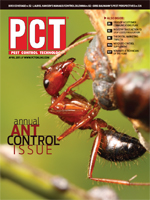 This 2006 photograph depicted a female Aedes aegypti mosquito in the process of acquiring a blood meal from her human host, who in this instance was actually the biomedical photographer James Gathany at the Centers for Disease Control. Photo: James GathanyDengue fever, or “break-bone fever,” is a mosquito-carried viral disease common to tropical areas worldwide. Symptoms include high fever, severe headache, pain behind the eyes, a rash, and pain in the bones and joints. A more severe form of the disease, known as dengue hemorrhagic fever, brings persistent vomiting, severe abdominal pain, failure of the circulatory system, bleeding from natural orifices, shock and possibly death.
This 2006 photograph depicted a female Aedes aegypti mosquito in the process of acquiring a blood meal from her human host, who in this instance was actually the biomedical photographer James Gathany at the Centers for Disease Control. Photo: James GathanyDengue fever, or “break-bone fever,” is a mosquito-carried viral disease common to tropical areas worldwide. Symptoms include high fever, severe headache, pain behind the eyes, a rash, and pain in the bones and joints. A more severe form of the disease, known as dengue hemorrhagic fever, brings persistent vomiting, severe abdominal pain, failure of the circulatory system, bleeding from natural orifices, shock and possibly death.
Dengue has been a major plague of tropical areas for a long time with more than 100 million cases reported each year. Interestingly, the mosquito vectors of dengue, Aedes aegypti and Aedes albopictus, commonly occur throughout much of the southern United States. Therefore, there has always been a threat for dengue to occur in the United States and for it to be locally acquired; and not just in ill travelers returning from tropical areas.
Recently, dengue fever has occurred in Florida after a 75-year absence (although there have been a few cases along the U.S.-Mexican border over the years).
Key West, Fla., had 27 cases in 2009 in an outbreak that ended with the mosquito season in mid-October. And between April through December of 2010, there were another 60 or so locally acquired cases in Key West. What’s more, cases have been reported farther up into Florida, with one in Broward County, and one in Miami-Dade County. For more specific outbreak numbers, see related story, “Dengue in Florida: An Update.”
STEPS TO HELP.
Since there is no specific treatment for dengue (doctors just treat the symptoms) and no vaccine, it’s important for homeowners and PMPs to take precautions to prevent spread of the disease. Several steps may help:
- Eliminate mosquito breeding sites around the home. Look for artificial containers such as buckets, old tires, pots, bird baths, etc., and empty or replace the water once a week.
- Avoid outdoor activity when mosquitoes are most active. The dengue mosquitoes are daytime biters, but primarily when it’s nearly dark, like early morning and late afternoon.
- Wear long-sleeved shirts and long pants when possible, and apply insect repellents on exposed skin. Use products containing the active ingredient DEET, picaridin, oil of lemon eucalyptus or IR3535. Some herbal concoctions and most mosquito control necklaces, bracelets, sonic repellers and other such devices are not likely to be effective.
- If you live in Florida and someone in your house becomes ill with dengue, take extra precautions to prevent mosquitoes from biting the patient and then going on to bite others in the household. This might mean sleeping under a mosquito net, utilizing appropriately labeled insecticidal space sprays in the home for mosquito control or wearing repellents.
PROFESSIONAL CONTROL EFFORTS.
Pest management professionals may also become involved in mosquito control efforts to stop the spread of dengue. This might include:
- Surveying the property for mosquito breeding areas to perform source reduction or treat with larvicides where appropriate.
- Spraying bushes and shrubs around homes with properly labeled residual insecticides to kill resting adult mosquitoes.
- Fogging around homes and/or patios with a hand-held fogger.
- ULV application of insecticides labeled for adult mosquitoes around homes or in neighborhoods. This can be done with a truck or an ATV-mounted unit.
Even if this recent outbreak of dengue in Florida is controlled, citizens shouldn’t drop their guard. Dengue is here to stay and there will surely be future outbreaks of the disease in the southern United States.
Dengue’s Origins
The first reported epidemics of dengue fever and dengue hemorrhagic fever occurred in 1779 to 1780 in Asia, Africa and North America. The near simultaneous occurrence of outbreaks on three continents indicates that these viruses and their mosquito vector have had a worldwide distribution in the tropics for more than 200 years. During most of this time, dengue fever was considered a mild, nonfatal disease of visitors to the tropics. Generally, there were long intervals — anywhere from 10 to 40 years — between major epidemics, mainly because the introduction of a new serotype in a susceptible population occurred only if viruses and their mosquito vector, primarily the Aedes aegypti mosquito, could survive the slow transport between population centers by sailing vessels.
The author can be contacted via email at jgoddard@giemedia.com.

Explore the April 2011 Issue
Check out more from this issue and find you next story to read.
Latest from Pest Control Technology
- Orkin Helps Local Youth Sports Program Design a ‘Killah’ New Logo
- ABC Home & Commercial Services Celebrates 75 Years in Business
- NPMA Academy Announces Full Schedule
- Truly Nolen Promotes Marchello, Christopherson and Bolton to Managerial Positions
- TruGreen Announces 2024 List of Top 20 U.S. Buggiest Cities
- Why PMPs Use Rodent Bait Stations
- NPMA’s Women’s Forum Encouraged Female Leadership, Growth Opportunities in Pest Control
- GoPest Expands to Birmingham and Huntsville (Ala.)





